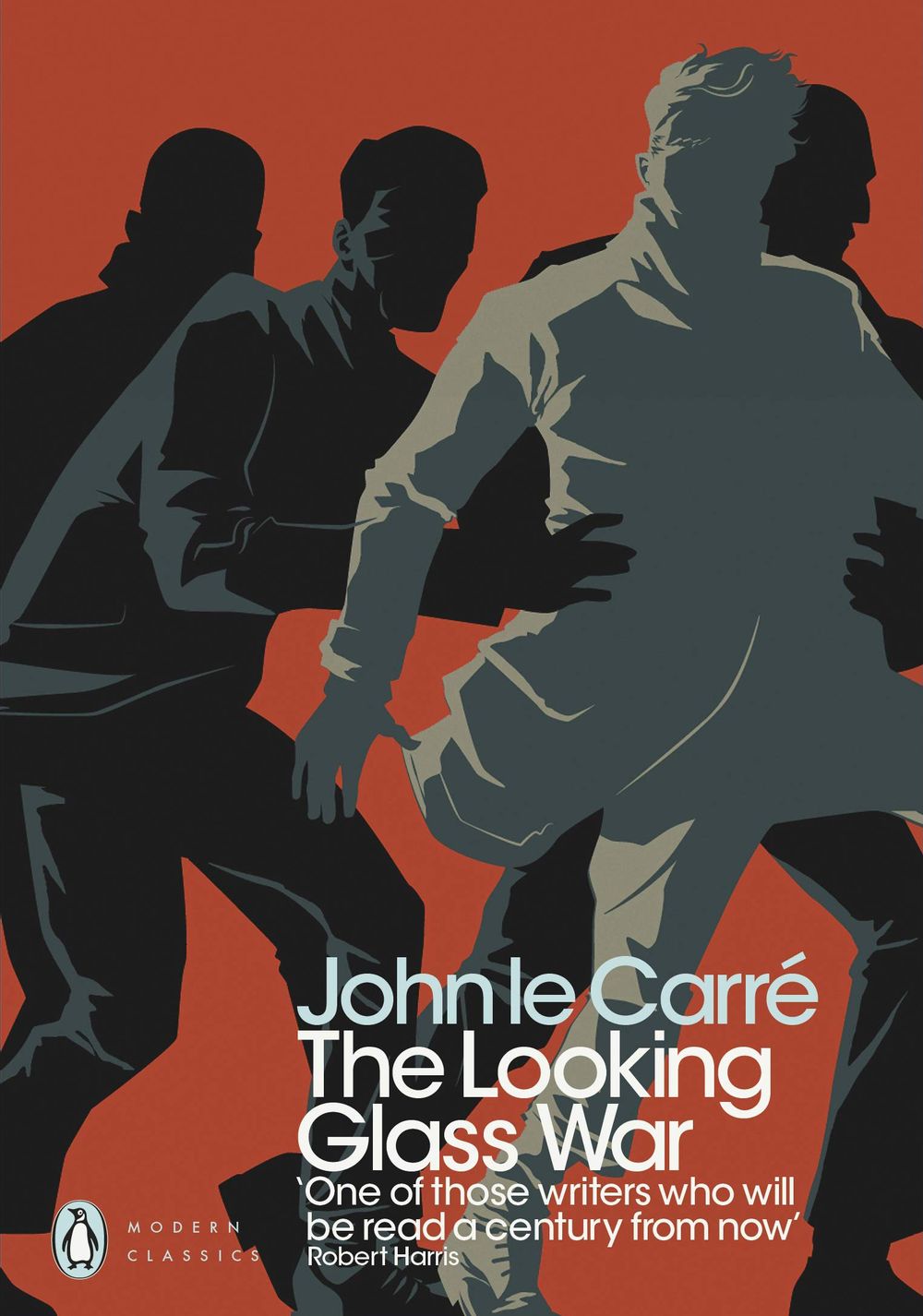
The Department, a slowly declining British intelligence service that exists in an uneasy rivalry with the Circus, obtains evidence of secret military activity in East Germany. The initial attempt to investigate leaves one of their agents dead.
Leclerc, the Department's director, describes John Avery as the brightest of their new stars. And so it's Avery who's given a key role in dealing with the death and handling the rest of the operation.
Although the focus of the book is on the Department, it shares its setting with the earlier novels about the Circus - George Smiley plays an important role and other pre-existing characters are mentioned.
The novel is Le Carré's second attempt at "Do Not Do This Cool Thing" and is even more cynical than The Spy Who Came in from the Cold, this time with a satirical edge.
It was adapted into a 1970 film, featuring Anthony Hopkins as Avery and Ralph Richardson as 'LeClerc'.
The Looking Glass War provides examples of:
- And You Thought It Was a Game: Leclerc insists on keeping the Circus out of the loop, telling them they're only providing support for a training exercise, not a live operation. Subverted as the Circus is well aware that's a lie, and is waiting for the operation to fail.
- Bolivian Army Ending: As part of the wider Downer Ending. Leiser and Anna are in her apartment when the Vopos track him down from his radio signalling. He's last seen with a knife at her throat. It's unclear whether they're killed or, as Smiley suggests, he's captured for a show trial. And if they're taken alive, it's unclear whether they'll believe she was innocent.
- Code Name: The plan to insert Leiser into East Germany is Operation Mayfly.
- Continuity Nod: An early reference to the Circus mentions Smiley, Leamas and Guillam by name, establishing the book's shared setting. Smiley later makes an appearance, the other two are merely there for context.
- Cover Identity Anomaly: Avery, travelling under his own name, claims to be half-brother to the late Mr Malherbe, Wilf Taylor's cover. It's not until he's quizzed by the Finnish police that he realises he hasn't seen Taylor's fake passport details and doesn't know his supposed brother's age or date of birth.
- Downer Ending: The Department's operation unravels and it's suggested that Leclerc, Haldane and Avery will all face the consequences. Leiser, pinned down in East Germany, is either captured or killed by the Vopos. Leiser's murder of a border guard becomes a propaganda story in East Germany and causes diplomatic tensions in the West. And the Circus predicted that most, if not all, of this would happen - and deliberately let the Department blunder into it.
- Inter-Service Rivalry: The Department doesn't trust the Circus, and excludes them from the operational details while relying on them for help. For their part, Control and the Circus are well aware that the Department’s scheme is doomed to failure, and are knowingly giving them enough rope to hang themselves and permanently end their rivalry.
- Late-Arrival Spoiler: One Continuity Nod acts as a spoiler for The Spy Who Came in from the Cold. Haldane suggests handing the operation over to the Circus, via one of the old hands, "someone like Smiley or Leamas". Leclerc points out that Leamas is dead.
- Meaningful Name: The plan to put Leiser into East Germany is Operation Mayfly. Leiser himself is codenamed Mayfly. Mayflies are famous for living only two days. At most.
- Plot-Triggering Death: Wilf Taylor's death in Finland, and the loss of the film he was collecting, drive almost all of the events that follow.
- Shoot the Shaggy Dog: Operation Mayfly is a disaster from start to finish.
- Taylor got his shabby aerial photos of the suspected missile site in a way that nearly got a civilian airliner shot down, and then dies before he can bring the evidence from Finland to London
- Leclerc takes Taylor's death as evidence of the site's existence, assuming he was murdered by the Stasi in an attempt to take the photoes. In actuality, Taylor's death was likely nothing more than a simple road accident.
- The ground operation costs a young East German border guard his life, and culminates in a Bolivian Army Ending while gathering no intelligence.
- There probably was no way that Leiser could have even collected the evidence that he was sent to get, because the missile site probably didn't exist.
- The only winner in the end is The Circus, who uses Mayfly's failure to win their Inter-Service Rivalry with The Department once and for all. The broader British intelligence community loses itself a skilled agent and has nothing to show for it other than a diplomatic embarrassment.
- Spotting the Thread: Leiser makes multiple mistakes once he's in East Germany, but his shoes are noticed even when his words don't give him away. They're too clean and far too new.
- Touché: Leclerc and Haldane both have variants of this when they realise that Mayfly's doomed and the Circus has been aware of what they're doing. Leclerc is the Graceful Loser, "impressed by the neatness of it". Haldane acknowledges it as well, but with rather more bitterness.Haldane: My congratulations to Control. Thank him, will you? Thank him for the help, the technical help, Smiley; for the encouragement, thank him for the rope. For the kind words too: for lending you to bring the flowers. So nicely done.
- The Unreveal: The book never reveals whether Taylor's death was murder or accidental. For that matter, it's strongly implied that the Kalkstadt missile site is a hoax, but the details are never made clear.
